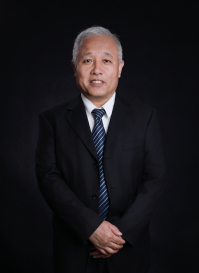

Ph.D. Peking University
M. A. Hebei Teachers University
B. A. Hebei Teachers University
Economic Anthropology
Anthropological Theories and Methods
Anthropological Field Work and Ethnography Writing
Ethnicity and Nationlism
2005 Between People and Gods: The Ritual Life,Economic Ethics and Hierarchical Order of a Dai Village in Mangshi, Yunnan, Beijing: Shehui Kexue Wenxian Chubanshe(Social Sciences Academic Press).
2017 (2014) Nu’er Ren: Dui yi ge Ni luo te Renqun de Shenghuo Fangshi he Zhengzhi Zhidu de Miaoshu (The Nuer: A Description of the Modes of Livelihood and Political Institutions of a Nilotic People), Beijing: Shangwu Yinshu Guan (The Commercial Press).
2019, “Present-Life and Future-Life Worlds: An Anthropological Study on the Buddhist Lives and Wealth Practices of the Dai in Mangshi”, Journal of Original Ecological National Culture, Vol.11, 58-67.
2016, “Karma Beliefs, Moral Views on Wealth and Social Order in Dai Villages of Mangshi City”, Journal of Guangxi University for Nationalities (Philosophy and Social Science Edition), Vol.38 No.2., 73-79.
2014(a), “Dόng lài Hānm gūn:the Life Ethics,Traditional Indoctrination and Social Control in the Tai Villages inMangshi”, Open Times, 6th Issue, 194-204.
2014(b), “Religion, Moral and Social Integration: Social Forms and Changes of the Dai Nationality in Mangshi in the Perspective of Weber’s Proposition”, Thinking, No.6, 2014, 44-49.
2014(c), “Individual and Society: Life Ethics, Ritual Practices and Social Structure of Dai Villages in Mangshi, Yunnan Province, Journal of South-Central University for Nationalityes (Humanities & Social Sciences), No.1, Vol.34, 53-59.
2014(d), “Social Integration Rituals that Cross Sacredness and Secularity”, Chinese Social Science Digest, No.2, 141-142.
2013, “On the ‘Zaga’ Rituals, Age-groups and Social Life of the Dai People in Mangshi”, Journal of Guangxi University for Nationalities (Philosophy and Social Science Edition), Vol.38 No.5, 96-104.
2010, “The Making of a Tradition: How the Dai’s Water-Splashing Festival Came to be Reinterpreted as a New-Year Festival”, Open Times , 2010(2), 101-115.
